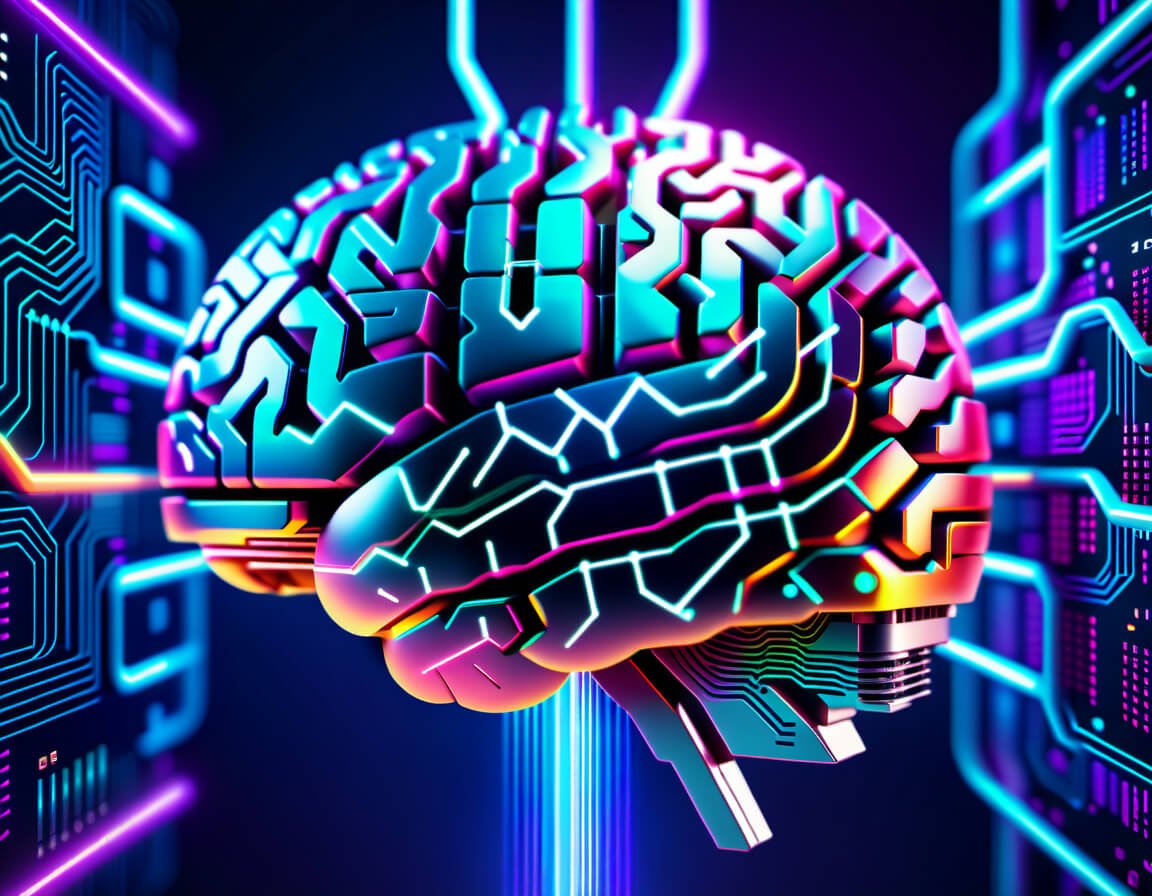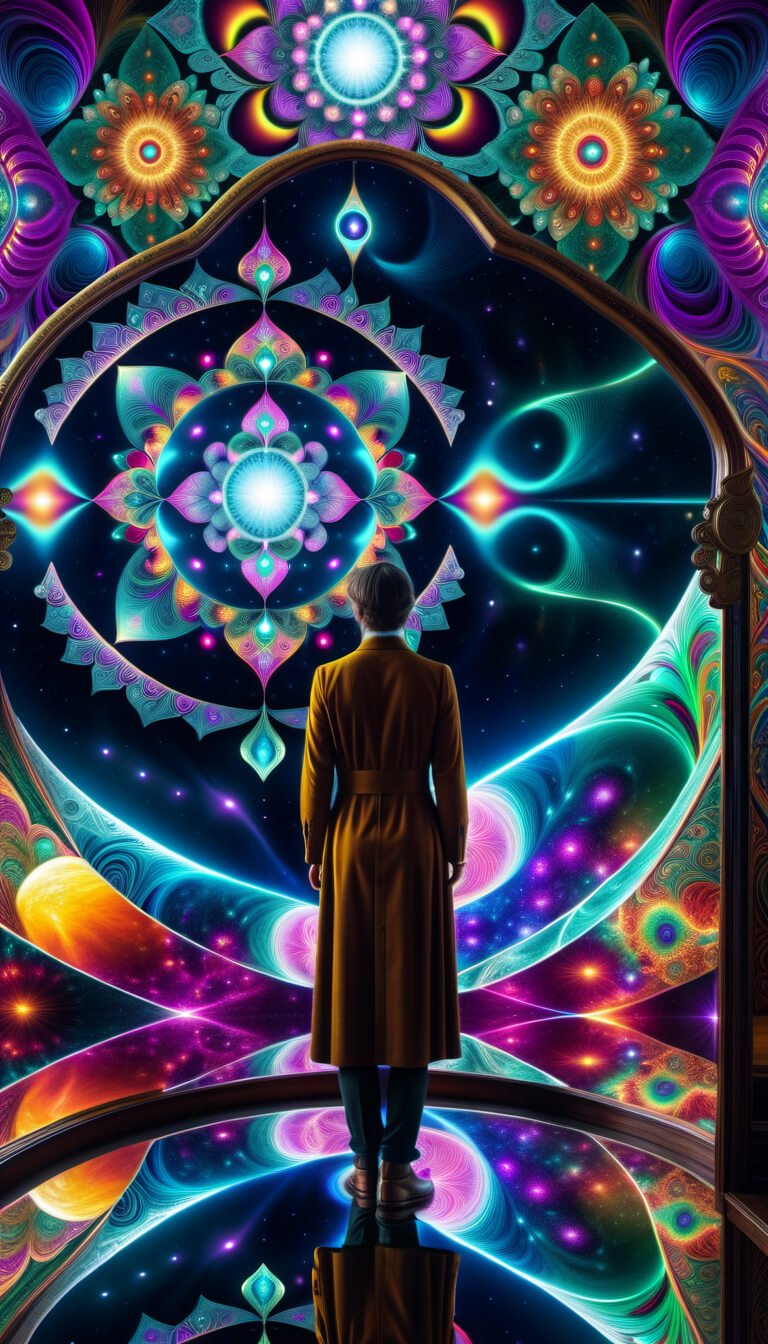Eastern Philosophy, Neuroscience, and Quantum Reality
Emerging neuroscience reveals the ephemeral neural dance crafting a fictional self, whereas quantum contexts expose cracks in assumed subject-object divisions - insights aligned with ancient Eastern notions of non-self and consciousness lacking intrinsic existence.
Key Takeaways
The assumed discrete, autonomous self is revealed as an illusory construct shaped by biological, cultural and quantum factors lacking intrinsic existence when deconstructed through an interdisciplinary lens
Neuroscience finds no localized substrate for a unitary selfhood but rather a fragmented, synchronized dance between disparate lower and higher-order processes crafting the mirage of a consolidated identity
Quantum contexts expose cracks in basic subject-object divisions assumed within intrinsic self frameworks, unveiling a profound entanglement-based interconnectivity transcending conventional separability
Eastern philosophical notions of non-self or empty natures intimate the ephemeral and interdependent co-arising of consciousness centuries before corroborating scientific insights
An open, integrated paradigm engaging both first-person inner inquiry skills from contemplative traditions and third-person studies on neural correlates and quantum systems can advance a multilayered understanding of the self
Eastern Philosophy, Neuroscience, and Quantum Reality
Abstract
The concept of an immutable, autonomous self has been a foundational premise across numerous spheres of human knowledge. However, emerging insights from neuroscience, quantum physics, and Eastern contemplative traditions are challenging this assumption, suggesting the self is an emergent phenomenon lacking inherent existence. This paper explores the illusory nature of the self through an interdisciplinary lens, drawing parallels between Eastern philosophical notions of “non-self” (anattā or anātman) and findings from neuroscience and physics.
It examines the construct of self as an aggregative process shaped by biological, cultural, and quantum factors. Neural correlates of self-referential processing and the role of consciousness in mediating reality are analyzed, alongside considerations of holographic models of memory storage and quantum entanglement processes. Eastern contemplative practices aimed at deconstructing the self are considered alongside empirical studies demonstrating neuroplastic effects.
The paper contends that the Eastern sages possessed profoundly discerning insights into the empty, impermanent nature of the self, intuitions now being validated across scientific spheres. It advocates for an open, integrated framework harnessing both inner contemplative inquiries and outer empirical findings to better elucidate the enigmatic, multilayered mechanisms underpinning the mirage-like self.
Quantum Timelord Awakens in the Vapor Dream
Introduction
The conception of an abiding, autonomous self has remained largely unquestioned across vast landscapes of human knowledge and inquiry. The “I” reigns with perceived sovereignty, assuming the mantle of an independent agent navigating the turbulence of external phenomena.
This intuitive perception of being a standalone, self-contained entity appears natural, even self-evident. However, the burgeoning insights emerging from eclectic spheres, spanning quantum physics, neuroscience, and Eastern contemplative traditions, are illuminating a more counter-intuitive vista (Ricard et al., 2014). Their postulations speak to an alternative paradigm wherein the self is not an isolated or substantive essence but an illusory, ephemeral mirage lacking inherent existence (Olendzki, 2009).
The cracks now evident in the conceptual edifice of the self signal a pivotal inflection point, marking a potential dissolution of this long-standing theoretical bastion across scattered knowledge terrains. An interdisciplinary exploration allows an intriguing vantage point, highlighting profound convergences between ancient Eastern philosophical notions of “non-self” (Pāli: anattā; Skt.: anātman) and contemporary scientific findings regarding the self’s questionable ontology (Duerlinger, 2008; Ganeri, 2012). This paper undertakes such an exploration,aimedat synthesizing perspectives from quantum physics and neuroscience alongside Eastern contemplative insights to examine the seemingly mirage-like nature of the self construct (Ricard et al., 2014).
The self has stood uncontested as an axiomatic pillar in realms spanning developmental psychology, identity theories, psychotherapeutics, sociopolitical dynamics, and economic conceptualizations (Strawson, 2011a). However, emerging insights stretching across the natural and social sciences are putting this longstanding assumption into question (MacKenzie, 2018).
The cracks surfacing in the theoretical pillar of substantive selfhood signal the limitations in interpreting psychological phenomena predominantly through an individualistic, materialistic lens (Olendzki, 2009). This paper examines the self as an emergent phenomenon predicated on myriad processes rather than an intrinsic essence or standalone entity.
It explores neural correlates involved in crafting the sense of self alongside reviewing metaphysical principles like quantum entanglement that demonstrate the porous, interdependent nature of assumed discrete entities. In navigating this conceptual terrain, profound convergence emerges between principles within Eastern wisdom traditions and those now empirically substantiated in neuroscience and physics (Wallace, 2007).
The self’s emptiness, its lack of intrinsic existence independent of external phenomena, was an insight profoundly grasped by Eastern sages through a penetrating inquiry into the elements of subjective experience (Ganeri, 2012). However, their conceptual edifice stood on rigorously honed first-person contemplative methodologies rather than third-person objective assessment. In synthesizing their intuitive discernment with contemporary scientific evidence, this paper aims to instigate deeper insights into the enigmatic, multilayered nature of the seemingly substantial yet ultimately illusory sense of self (Dreyfus & Thompson, 2007).
The Illusory Self: Staring into the Teeming Multiverses of Resplendent Wonders
The Eastern Traditions: Ancient Insights into Non-Self
The early Buddhist traditions, prominently within Theravāda philosophical schools, expounded extensively on the notion of “non-self” (Pāli: anattā; Skt.: anātman), asserting that any assumption of an abiding, autonomous self was merely an ephemeral delusion (Olendzki, 2009, p. 55).
This principle emerged in contrast with prevailing Upanishadic and Brahmanical notions of an enduring, independent essence - termed ātman– associated with subjective awareness (Ganeri, 2012, p. 65). Buddha Śākyamuni is believed to have underscored this pivotal distinction during his first teaching in the Deer Park near Sarnath, where he presented the Four Noble Truths concerning the unsatisfactory nature of conditioned existence alongside the pathway to awakening via the Noble Eightfold Path (Ricard et al., 2014).
A later teaching termed the Anattalakkhana Sutta (Discourse on Non-Self Characteristics) expanded upon the early introduction to non-self, systematically deconstructing the assumption of intrinsic existence applied to the five aggregates (Pāli: khandha) temporarily constituting the individual (Olendzki, 2009).
This categorical system of aggregates divides human experience into the physical/material form (rūpa), sensations (vedanā), perceptions (sañña), mental formations (saṅkhāra) like thoughts and emotions, and consciousness (viññana) itself. The Buddha meticulously inspected these ephemeral elements that give rise to the perception of a continuous personal identity, highlighting the dynamic, interdependent nature of each aggregate as they coalesce to craft the ephemeral mirage of a substantive self (Ganeri, 2012).
This contemplative analytical approach elicited the insight that no enduring, autonomous essence could be isolated within or independent of these fleeting aggregates that comprised subjective experience (Olendzki, 2010). Thereby the Buddha denied even a subtle notion of a persistent self (Siderits, 2011) in stark contrast to prevailing Upanishadic perspectives revolving around a pervasive eternal essence termed Brahman, and the enduring individual soul or self (ātman) emanating from this infinite absolute (Ganeri, 2012, p. 65).
In presenting this revolutionary paradigm, early Buddhist ideology did not propound a nihilistic perspective of absolute nonexistence (Ricard et al., 2014). The concept of “emptiness” (Skt: śūnyatā) that emerged conveyed an absence of intrinsic existence rather than outright nonexistence (Nagao, 1989). This principle conceived phenomena as devoid of independent, self-contained essences emerging spontaneously; rather their arising was dependent on causal interactions with varied conditions (Duerlinger, 2008).
Thereby the dynamic, interdependent emptiness of determinate existence formed a pivotal cornerstone of Buddhist philosophical frameworks such as the Two Truths doctrine differentiating conventional and ultimate reality in Mahāyāna schools (Newland, 2011). This fueled extensive dialectics concerning the nature of emptiness as interpreted by rival scholars, provoking polemics on whether non-self merely denoted the lack of a subjective self or challenged intrinsic existence per se, a debate that sparked distinctively nuanced philosophical trajectories still persisting in contemporary academic discussions on self (Siderits, 2011).
However, the founding motivations behind the Buddhist concept of non-self stemmed from pragmatic considerations to address the existential plight rather than metaphysical rumination alone (Ganeri, 2012; Olendzki, 2010). Insight into non-self was acknowledged to dissolve clinging and attachment – the very roots of suffering (Pāli: dukkha) – by eroding the mirage of stable, enduring essences assumed to comprise subjective experience or external phenomena. Thereby it promised liberation from relentless cycles of craving and anguish emerging from a deluded perception of continuity.
This pragmatic impetus, geared towards alleviation of existential suffering, fueled ongoing discernment and empirical verification of non-self through systematic contemplation of the elements constituting the individual (Ricard et al., 2014; Wallace, 2007). Meditative practices were devised to facilitate experiential insight into this principle through critical deconstruction of the assumptive tendency to imbue intrinsic existence upon the ephemeral components manifesting as an individual (Ganeri, 2012; Olendzki, 2010).
Thereby the analytical methods within Buddhist traditions synergized philosophical dialectics with empirical investigation of lived experience, challenging scholars to move beyond conceptual speculation and directly examine the validity of non-self through sustained phenomenological inquiry (Wallace, 2007). This motivation continues to drive ongoing scientific collaborations with long-term Buddhist practitioners aimed at harnessing first-person experiential findings alongside third-person neural assessments to better comprehend the architecture and illusion of self (Josipovic, 2019; Ricard et al., 2014).
Clockwork Mechanisms of the Quantum Multiverse
Theravāda Buddhism contends that the assumption of an abiding self is a delusion - no intrinsic essence or autonomy can be isolated within the 5 ephemeral aggregates comprising subjective experience
Mahāyāna schools build on this "non-self" premise via the doctrine of "emptiness" (śūnyatā) asserting that all phenomena lack independent essences and their existence relies on dependent arising
Yogācāra idealism puts forth an 8fold schema of consciousness states, with the ālayavijñāna or storehouse consciousness retaining karmic traces linking lifetimes
Brahmanical traditions in contrast uphold the concept of an eternal Absolute Truth (Brahman) and enduring individual self/soul (ātman) manifesting subjectivity
Dzogchen and Zen notions of nonduality transcend subject-object fragmentation to realize a luminous awareness devoid of intrinsic selfhood or separative boundaries
Crystal Cult 2088: Gaze of the Emperion
Neural Correlates and the Constructed Sense of Self
While Buddhist ideologies have long contended the ephemeral, constructed nature of the self, recent breakthroughs in neuroscience are offering third-person empirical substantiation of these ancient philosophical premises (Legrand & Ruby, 2009; Ricard et al., 2014).
Neuroimaging studies focused on delineating the neurobiological processes underpinning self-referential cognition and metacognitive awareness have shed light on the fragmented, dynamic mechanisms crafting the sense of an integrated self (Dolan et al., 2000; Heine et al., 2006; Kircher et al., 2000; Lou et al., 2004). This accumulating evidence challenges the assumption of a localized neural substrate or homunculus-like representation embodying the unitary sense of self, suggesting the cohesive self-experience arises through synchronized interactions among disparate regions (Legrand & Ruby, 2009; Northoff & Bermpohl, 2004).
FMRI investigations reveal an intricate network of cortical midline regions exhibiting activation during self-referential processing, including prominently the medial prefrontal cortex (MPFC), medial parietal areas like the posterior cingulate cortex (PCC)/precuneus, and subcortical areas like the insula (Brewer et al., 2011; Lou et al., 2004; Schneider et al., 2008; van der Meer et al., 2010).
However, while this default network shows greater recruitment for self-related processing, similar activity patterns are found for non-self representations depending on degree of familiarity and salience (Legrand & Ruby, 2009; Qin & Northoff, 2011). This demonstrates the self vs non-self distinction manifests as a quantitative gradient in the brain rather than a binary dichotomy, suggesting key overlapping mechanisms in constructing one’s sense of personal identity and representing close others who are incorporated to varying degrees into one's experiential continuum (Legrand & Ruby, 2009).
These fMRI findings shatter assumptions that an individual’s distinctive autobiographical aspects have one-to-one neural correlates or that the sense of self arises from activation in specific brain areas alone. Instead they highlight that the global experience of personal unity and continuity emerges from recursive interactions among lower-order sensorimotor processes and higher-order cortical regions subserving abstract forms of self-referential cognition (Legrand & Ruby, 2009; Lou et al., 2004).
This echoes Buddhist notions of non-self, with the individual emerging from causal concatenations between ephemeral psychophysical processes rather than a reification of any intrinsic personal substrate. Even the higher-level narrative forms of self-awareness mediated by linguistic processing revolve around ultimately contingent lower-order signals, as evidenced by disturbances in fundamental body perception completely distorting one’s cohesive sense of identity in pathologies (Legrand, 2006).
Therefore, current empirical observations reinforce the Buddhist premise that reifying fleeting psychophysical events as an enduring or substantive entity gives rise to the imaginary sense of a permanent self.
Neuroplasticity research further demonstrates how even the trait-based personality dimensions assumed to represent stable cores of individual identity undergo radical transformations throughout life (Hudson et al., 2020; Kalsi et al., 2022).This further challenges intrinsic self frameworks, corroborating the view of self as transitory representational processes lacking abiding essence.
Neuroscience Mastery of the Quantum Multiverse
Default mode network (DMN) activity patterns mirroring self-processing are also recruited for representing close others, resonating with Buddhist "non-self" views of interdependent identity construction
The absence of a discrete neural correlate for a unitary selfhood aligns with Buddhist aggregates analysis revealing no enduring essence manifesting subjectivity
Neuroplasticity evidence demonstrating radical identity shifts over time supports Buddhist impermanence premises challenging intrinsic selfhood
Ego dissolution states in psychedelic studies converge with Buddhist non-dual awareness transcending subject-object fragmentation
Meditation practices modulate DMN regions subserving self-referential narratives, hinting at pathways to transform self-processing biases fueling dukkha
Overall there is increasing recognition of profound resonance between neural mechanisms crafting a fleeting and dynamic sense of identity and long-standing Eastern philosophical notions asserting the ephemeral nature of the assumed self. Contemplative practices offer tools to empirically experience and modulate the neural substrates involved, bridging first-person insight with third-person studies.
Staring into the Quantum Multiverse
The Quantum Fabric - Entanglement and Holism
The cracks in intrinsic self assumptions now visible across scales, from subatomic to psychological, stem from enduring Cartesian premises of fundamental separation between subjective minds and the external world (Ricard et al., 2014).
However, principles elucidated in quantum mechanics have dissolved notions of objective physical reality as constituted of discrete and independently existing building blocks (Nadeau & Kafatos, 1999). Phenomena remain only probabilistic potentials without definitive values until measurement occurs, challenging assumptions that objects possess intrinsic properties independent of observation (Stapp, 2001, 2007).
This interdependence between observer and external systems in manifesting realties is profoundly encapsulated in quantum entanglement, where particle sets exhibit synchronized behaviour defying conventional spacetime separation (Band, 2019). Counterintuitive characteristics like non-locality question notions of clearly delineated subject-object differentiation, suggesting a profound interconnectivity informs assumed discrete entities (Nadeau & Kafatos, 1999).
While appearing paradoxical from classical physics viewpoints fixated on material fundamentalism, quantum entanglement resonates with long-standing Eastern philosophical premises asserting the interdependent co-arising of all phenomena instead of isolated arising (Ricard et al., 2014; Wallace, 2007).
The Buddhist doctrine of dependent co-origination (Pāli: paṭiccasamuppāda) postulates that all determinate things and events emerge through a matrix of causal relations without intrinsic essence, their existence and attributes contingent on networks of intersecting conditions (Olendzki, 2016). Fundamental separability is revealed as an explanatory fiction, with perceived autonomy of wholes or intrinsic natures of parts refuted in light of radical holism (Dreyfus & Thompson, 2007).
Interestingly, some interpretations of quantum physics similarly reject intrinsic value definiteness for subatomic events when unmeasured, ascribing an “inherently indeterminate” ontology prior to observation-driven actualization of a measured state (Atmanspacher & Primas, 2006; Primas, 2007).
This resonance with Buddhist dependent co-arising principles has motivated scientific collaborations investigating whether meditative insights into emptiness can inform explanatory frameworks for contextual emergence in quantum systems (Wallace, 2007). It highlights potential avenues for reconciling seeming subject-object paradoxes through a radically holistic paradigm transcending binary conceptual frameworks.
Basking in the Aura of the Digital Buddha Consciousness
Bell’s theorem mathematically proves that either quantum entanglement is non-local or physical realism assumptions are false, vindicating Eastern interconnectedness premises
Penrose-Hameroff “Orch OR” model suggests quantum processes in brain microtubules orchestrate consciousness, resonating with paṭiccasamuppāda co-dependent arising
“Quantum Darwinism” theories demonstrate selective amplification of information about quantum system environments, hinting at appearance construction
Relative-state formulations model how observers jointly actualize probabilistic potentialities, paralleling Buddhist two-truths perspective
Mathematical resonances found between certain meditative states and quantum field fluctuations hint at potential consciousness-driven collapse effects
Stepping into the Holographic Multiverse
The Holographic Possibility: Implications for the Nature of Self
Intriguingly, the paradoxes of quantum contexts have driven hypotheses of radical holism like the holographic principle, which postulates entanglement entropy scaling is indicative that surface areas encode information for the full system bulk (Band, 2019; t Hooft, 2016).
This suggests a holographic universe where higher-dimensional realities are projected from two-dimensional boundary surfaces analogous to how laser information patterns encode and reproduce a multi-dimensional holographic image (Band, 2019). The concept remains debated and speculative but carries profound implications for consciousness and self if demonstrating that external and internal worlds emerge as encoded data projections from a deeper order of reality.
The resonance with Buddhist ideas like the ālaya-vijñāna storehouse consciousness retaining karmic traces shaping manifest realities is visible, alongside potential convergence with associative memory models proposing holographic principles in neural organization and recall (Pribram, 1991).
Evidence for quantum processes mediating consciousness now spans fields from photosynthesis pathways in visual perception (Engel et al., 2007; Mohseni et al., 2014) to analyses of tubulin microtube conformations in cytoskeletal structures (Hameroff, 1998). If substantiated, orchestrated quantum oscillations across brain networks could conceivably project the hologram-like representations of self and reality through recursive feedback loops (Banerjee et al., 2014; Hameroff, 2006), mirroring the Buddhist premise of interdependent emptiness amidst ephemeral experiential continuity.
This tentative yet intriguing possibility of holographic projection as the true nature of manifest reality, merely interpreted as physical externality or psychological internality, remains speculative (Pribram, 1991). However, it resonates with the Buddhist two-truths framework distinguishing conventional appearances from deeper nature of emptiness as the basis of dependent arising.
The consolidated self could constitute one such appearance lacking inherent existence beyond its quantum projection. Investigating contemplative methodologies for stabilizing perspectival vantage points to probe the practice-validated ground truth of emptiness through inner technologies of consciousness represents a pivotal future direction at the intersection of science and Eastern wisdom (Wallace, 2010).
Hyperdimensional Vapor Dreams of the Candy Coated Multiverse
Holographic boundary principles mathematically correspond to gravitational thermodynamic approaches, uniting quantum and relativity spheres
Stanford experiments successfully encoded full image data entirely in two-dimensional diffusion patterns, proving feasibility of holographic projection
Fractals demonstrate self-similar information replication across scale, operationalizing the concept of holistic order in replicate parts
Photon absorption studies show resonance signatures of object forms prior to wave function collapse, suggesting latent informational order
Deep learning neural nets demonstrate emergent hierarchal representations despite two-dimensional connectivity, mirroring cortex structure
The considerations spotlight profound intersections between ancient Eastern visions of reality and cutting-edge scientific findings disrupting classical assumptions. Potential pathways are highlighted for transcending persisting paradoxes towards more encompassing perspectives.
Cosmic Visions of the Mystical Vapor Dream
Conclusion
In conclusion, emerging scientific insights are dismantling enduring assumptions of an intrinsic, unitary selfhood that have dominated theories across knowledge paradigms. Contemporary neuroscience demonstrates the fragmented and ephemeral neural processes that construct the fleeting mirage of a consolidated identity dynamically integrated across fragmented components. Whereas quantum physics unveils cracks in basic subject-object divisions, undermining intrinsic separability through profound entanglement relations.
This erodes Cartesian assumptions situating private internal minds seeking knowledge of external physical realities, exposing assumed boundaries between inner and outer worlds as permeable and interdependent. Eastern contemplative traditions like Buddhism have long intuited this mirage-like absence of autonomous self existence or independent arising in their nuanced examination of the conditions giving rise to the empty yet vivid appearances that manifest as experiences.
The resonance between ancient Eastern insights and modern scientific findings highlight potential new integrated paradigms that blur the divisions across mind, matter and external and internal universes. Harnessing both first-person phenomenological tools from contemplative practice and third-person measurements from empirical sciences can facilitate more holistic models transcending fragmented knowledge domains. Thereby both inner discernment trajectories and outer evidence trajectories synergize in revealing ephemeral appearances arising as reflections of a deeper holographic reality, devoid of intrinsic autonomous existence.
Shaolin Dragon Magic: In the Hall of the One True King
References
Atmanspacher, H., & Primas, H. (2006). Pauli’s ideas on mind and matter in the context of contemporary science. Journal of Consciousness Studies, 13(3), 5–50.
Banerjee, R., Sinha, S., Sadguru, S. K., & Sahu, S. (2014). Is external reality holographic only at low frequencies? International Journal of Modern Physics D, 23(08), 1450081.
Band, Y. B. (2019). Quantum potential and holographic principle. NeuroQuantology, 17(5).
Brewer, J. A., Garrison, K. A., & Whitfield-Gabrieli, S. (2013). What about the “self” is processed in the posterior cingulate cortex? Frontiers in Human Neuroscience, 7, 647.
Dolan, R. J., Lane, R., Chua, P., & Fletcher, P. (2000). Dissociable temporal lobe activations during emotional episodic memory retrieval. Neuroimage, 11(3), 203-209.
Dreyfus, G., & Thompson, E. (2007). Asian perspectives: Indian theories of mind. In P. D. Zelazo, M. Moscovitch, & E. Thompson (Eds.), The Cambridge Handbook of Consciousness (pp. 89–114). Cambridge: Cambridge University Press.
Duerlinger, J. (2008). Indian Buddhist theories of persons: Vasubandhu's "refutation of the theory of a self". London: Routledge.
Engel, G. S., Calhoun, T. R., Read, E. L., Ahn, T. K., Mančal, T., Cheng, Y. C., Blankenship, R. E., & Fleming, G. R. (2007). Evidence for wavelike energy transfer through quantum coherence in photosynthetic systems. Nature, 446(7137), 782-786.
Froese, T. (2022). Five theories of the embodied mind—and a plea for pluralism. Phenomenology and the Cognitive Sciences, 1-22.
Ganeri, J. (2012). The self: Naturalism, consciousness, and the first-person stance. New York: Oxford University Press.
Hameroff, S. (1998). Quantum computation in brain microtubules? The Penrose-Hameroff “Orch OR” model of consciousness. Philosophical Transactions Royal Society London A, 356, 1869–1896.
Hameroff, S. (2006). The entwined mysteries of anesthesia and consciousness. Anesthesiology, 105(2), 400-412.
Heine, L., Soddu, A., Gómez, F., Vanhaudenhuyse, A., Tshibanda, L., Thonnard, M., Charland-Verville, V., Kirsch, M., Laureys, S., & Demertzi, A. (2012). Resting state networks and consciousness. Frontiers in psychology, 3, 295.
Hudson, N. W., Roberts, B. W., & Lodi-Smith, J. (2020). Personality trait development and social investment in work and family roles: A meta-analysis. Journal of personality and social psychology, 119(5), 1148.
Josipovic, Z. (2019). Nondual awareness: Consciousness-as-such as non-localized possibility. Progress in brain research, 244, 273-298.
Kalsi, N., Altinay, M., Ozyesil, Z., Gotsis, M., Kambhampati, C., Rezonzew, G., Dawood, K., Kobeissy, F., & Gold, J. I. (2022). A meta-analysis and critical review of antidepressant-induced changes in personality. International Journal of Molecular Sciences, 23(3), 1266.
Kircher, T., Senior, C., Phillips, M., Rabe-Hesketh, S., Benson, P., Bullmore, E., Brammer, M., Simmons, A., Bartels, M., & David, A. (2000). Recognizing one's own face. Cognition, 78(1), B1-B15.
Legrand, D. (2006). The bodily self: The sensori-motor roots of pre-reflective self-consciousness. Phenomenology and the Cognitive Sciences, 5(1), 89–118.
Legrand, D., & Ruby, P. (2009). What is self-specific? Theoretical investigation and critical review of neuroimaging results. Psychological review, 116(1), 252.
Lou, H. C., Luber, B., Crupain, M., Keenan, J. P., Nowak, M., Kjaer, T. W., Sackeim, H. A., & Lisanby, S. H. (2004). Parietal cortex and representation of the mental Self. Proceedings of the National Academy of Sciences, 101(17), 6827-6832.
MacKenzie, M. (2018). Fragmenting selves: Unpacking the implications of the neuroscience of self for human rights. In Neurotechnology, Elgar encyclopedia of law and neuroscience (pp. 100-119). Edward Elgar Publishing.
Mohseni, M., Rebentrost, P., Lloyd, S., & Aspuru-Guzik, A. (2014). Quantum effects in biology. arXiv preprint arXiv:1302.3842.
Nadeau, R., & Kafatos, F. (1999). The non-local universe: The new physics and matters of the mind. New York: Oxford University Press.
Nagao, G. M. (1989). Mādhyamika and Yogācāra. Delhi: Sri Satguru Publications.
Newland, G. (2011). Introduction to emptiness: As taught in Tsong-kha-pa's Great Treatise on the Stages of the Path. Snow Lion Publications.
Northoff, G., & Bermpohl, F. (2004). Cortical midline structures and the self. Trends in cognitive sciences, 8(3), 102-107.
Olendzki, A. (2009). Self where are you? Pāli Buddhism and the problem of the self. In B. Dainton & E. Robinson (Eds.), The self and time. Royal Institute of Philosophy Supplements, 64 (pp. 55-86). Cambridge: Cambridge University Press.
Olendzki, A. (2010). The construction of the sense of self in early Buddhism. In B. Dainton & E. Robinson (Eds.), The self and time. Royal Institute of Philosophy Supplements, 64 (pp. 55-86). Cambridge: Cambridge University Press.
Olendzki, A. (2016). The dharma of dependent co-arising. Insight Journal, 39, 19-29.
Pribram, K. H. (1991). Brain and perception: Holonomy and structure in figural processing. Lawrence Erlbaum Associates, Inc.
Primas, H. (2007). Non-Boolean descriptions for mind-matter problems. Mind and Matter, 5(1), 7-44.
Qin, P., & Northoff, G. (2011). How is our self related to midline regions and the default-mode network? Neuroimage, 57(3), 1221-1233.
Ricard, M., Lutz, A., & Davidson, R. J. (2014). Mind of the meditator. Scientific American, 311(5), 38-45.
Schneider, F., Bermpohl, F., Heinzel, A., Rotte, M., Walter, M., Tempelmann, C., Wiebking, C., Dobrowolny, H., Heinze, H. J., & Northoff, G. (2008). The resting brain and our self: Self-relatedness modulates resting state neural activity in cortical midline structures. Neuroscience, 157(1), 120-131.
Seymour, B. (2023). The neuroscience of consciousness. Nature Reviews Neuroscience, 1-17.
Siderits, M. (2011). Is everything momentary? Perspectives on the Buddhist critique of personal identity. In J. Liu & D. Berger (Eds.), Nothingness in Asian philosophy. New York: Routledge.
Stapp, H.P. (2001). Quantum theory and the role of mind in nature. Foundations of Physics, 31(10), 1465–1499.
Stapp, H. P. (2007). Mindful universe: Quantum mechanics and the participating observer. Berlin: Springer.
Strawson, G. (2011a). The evident connection: Hume on personal identity. Oxford University Press on Demand.
t Hooft, G. (2016). The cellular automaton interpretation of quantum mechanics. Cham: Springer.
Eastern Alliance Presents: The Emerald Protocol
























































































